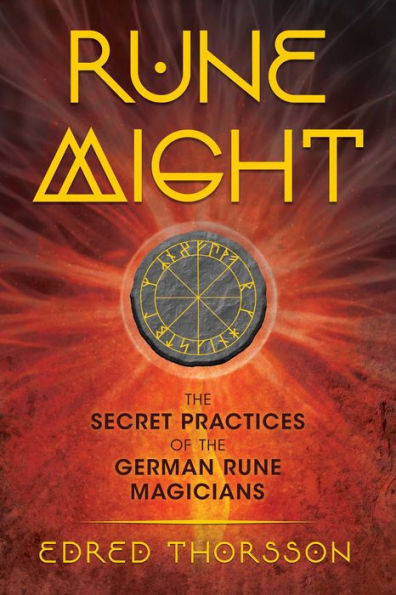A practical handbook to the history, exercises, and techniques of German rune work
• Explores the four traditional runic systems: the Older Futhark, the Anglo-Frisian Futhorc, the Younger Futhark, and the Armanic Futhork
• Details powerful rune work techniques and exercises, including rune yoga and dance, runic hand gestures (mudras), rune singing (mantras), runic healing, runic tantra and sex magic, rune rituals, runic divination, and the runic theory of crystals
• Examines the history of esoteric runology and the trailblazers of modern rune magic, including Guido von List, Friedrich Bernhard Marby, and Rudolf John Gorsleben
Although the rune renaissance began blossoming in Anglo-American occult circles in the 1970s, the runes have been part of the occult revival in Germany since its beginning in the late 19th century, with roots that go back centuries further. Exploring the history of esoteric runology and the work of the trailblazers of modern rune magic, including Guido von List, Friedrich Bernhard Marby, and Rudolf John Gorsleben, author Edred Thorsson details the secret practices and runic systems of the German rune magicians, including techniques for using runes in unprecedented ways to draw power into your life.
Thorsson explores all four of the traditional runic systems: the Older Futhark (24 runes), the Anglo-Frisian Futhorc (29-33 runes), the Younger Futhark (16 runes), and the Armanic Futhork (18 runes), developed by Guido von List. The author explains the similarities and differences between them as well as how they are all facets of the same underlying runic reality. He examines the early history and possible origins of runic symbols and systems, the renaissance of rune magic from 1919 to 1935, the effects of the Third Reich and Nazis on the runic revival, as well as the reemergence of German runology after World War II.
Providing an extensive practical section, Thorsson details powerful runework techniques and exercises, including rune yoga and dance, runic hand gestures (mudras), rune singing (mantras), rune yodeling, runic healing, runic tantra and sex magic, group rites with runes, and two powerful methods of engaging transpersonal powers: the Ritual of the Ninth Night and the Ritual of the Grail Cup. He also explores runic divination, the runic theory of crystals, runic symbolism in medieval German buildings, and runic material from the documents of the Fraternitas Saturni, the Brotherhood of Saturn.
By immersing yourself in the world of the runic pioneers and the practices they designed, you will emerge with a deeper understanding of runes as well as the magical world from which they emanate.



